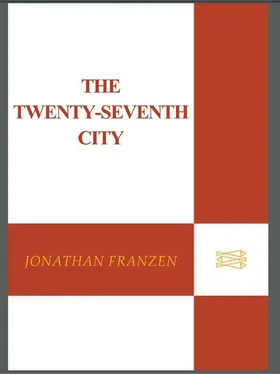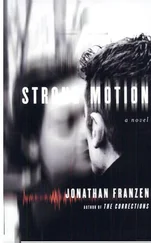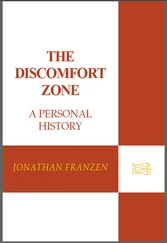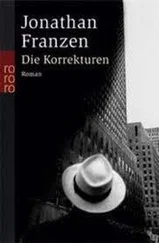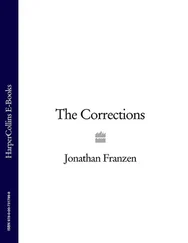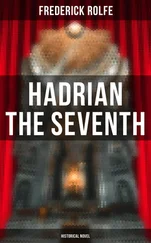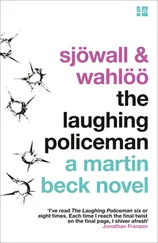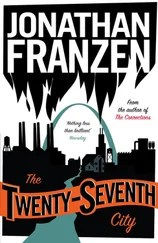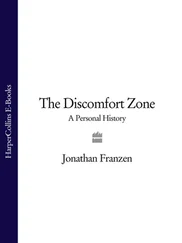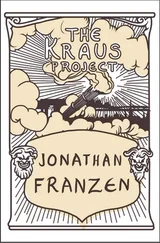Jonathan Franzen - The Twenty-Seventh City - A Novel
Здесь есть возможность читать онлайн «Jonathan Franzen - The Twenty-Seventh City - A Novel» — ознакомительный отрывок электронной книги совершенно бесплатно, а после прочтения отрывка купить полную версию. В некоторых случаях можно слушать аудио, скачать через торрент в формате fb2 и присутствует краткое содержание. Год выпуска: 1988, ISBN: 1988, Издательство: Picador, Жанр: Триллер, Современная проза, на английском языке. Описание произведения, (предисловие) а так же отзывы посетителей доступны на портале библиотеки ЛибКат.
- Название:The Twenty-Seventh City : A Novel
- Автор:
- Издательство:Picador
- Жанр:
- Год:1988
- ISBN:0312420145
- Рейтинг книги:5 / 5. Голосов: 1
-
Избранное:Добавить в избранное
- Отзывы:
-
Ваша оценка:
The Twenty-Seventh City : A Novel: краткое содержание, описание и аннотация
Предлагаем к чтению аннотацию, описание, краткое содержание или предисловие (зависит от того, что написал сам автор книги «The Twenty-Seventh City : A Novel»). Если вы не нашли необходимую информацию о книге — напишите в комментариях, мы постараемся отыскать её.
From Library Journal Highly gifted first novelist Franzen has devised for himself an arduous proving ground in this ambitious, grand-scale thriller. Literate, sophisticated, funny, fast-paced, it’s a virtuoso performance that does not quite succeed, but it will keep readers engrossed nonetheless. Bombay police commissioner S. Jammu, a member of a revolutionary cell of hazy but violent persuasion, contrives to become police chief of St. Louis. In a matter of months, she is the most powerful political force in the metropolis. Her ostensible agenda is the revival of St. Louis (once the nation’s fourth-ranked city and now its 27th) through the reunification of its depressed inner city and affluent suburban country. But this is merely a front for a scheme to make a killing in real estate on behalf of her millionaire mother, a Bombay slumlord. Jammu identifies 12 influential men whose compliance is vital to achieving her ends and concentrates all the means at her disposal toward securing their cooperation. Eventually, the force of Jammu’s will focuses on Martin Probst, one of St. Louis’s most prominent citizens, and their fates become intertwined. Franzen is an accomplished stylist whose flexible, muscular, often sardonic prose seems spot-on in its rendition of dialogue, internal monologue and observation of the everyday minutiae of American manners. His imagination is prodigious, his scope sweeping; but in the end, he loses control of his material. Introducing an initially confusing superabundance of characters, he then allows some of them to fade out completely and others to become flat. The result is that, despite deft intercutting and some surprising twists at the end, the reader is not wholly satisfied. Any potential for greater resonance is left undeveloped, and this densely written work ends up as merely a bravura exercise. 40,000 copy first printing; $50,000 ad/promo; BOMC and QPBC selections.
Copyright 1988 Reed Business Information, Inc.
In the late 1980s, the city of St. Louis appoints as police chief an enigmatic young Indian woman named Jammu. Unbeknownst to her supporters, she is a dedicated terrorist. Standing alone against her is Martin Probst, builder of the famous Golden Arch of St. Louis. Jammu attempts first to isolate him, then seduce him to her side. This is a quirky novel, composed of wildly disparate elements. Franzen weaves graceful, affecting descriptions of the daily lives of the Probsts around a grotesque melodrama. The descriptive portions are almost lyrical, narrated in a minimalist prose, which contrasts well with the grand style of the melodramatic sections. The blend ultimately palls, however, and the murky plot grows murkier. Franzen takes many risks in his first novel; many, not all, work. Recommended. David Keymer, SUNY Coll. of Technology, Utica
Copyright 1988 Reed Business Information, Inc.
